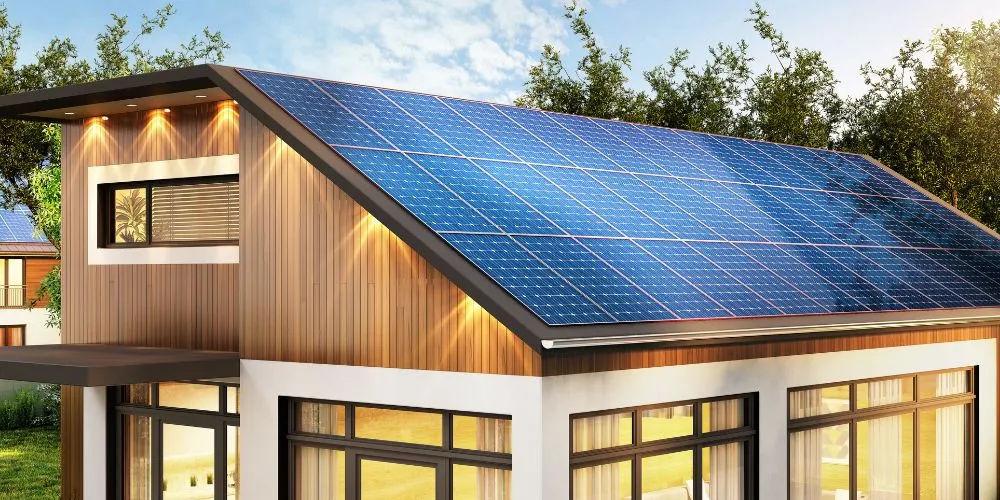In sustainable architecture, passive solar design emerges as an innovative and eco-friendly approach, utilizing the sun’s energy to enhance thermal comfort and reduce reliance on mechanical heating and cooling systems. This article explores the intricate world of passive solar design, examining its historical roots, key principles, architectural considerations, and its pivotal role in shaping energy-efficient and environmentally conscious buildings.
Historical Roots and Evolution of Passive Solar Design
Passive solar design has ancient roots, with civilizations intuitively harnessing the sun’s warmth for comfort. From ancient sun-facing structures to more recent developments in solar architecture, the evolution of passive solar design mirrors humanity’s evolving understanding of sustainable living and harmonizing with nature.
Ancient Solar Architecture and Vernacular Wisdom
Historically, ancient civilizations incorporated passive solar principles into their architecture. Structures in ancient Greece, Rome, and the Middle East were often oriented to maximize sunlight penetration during winter while providing shade during summer. Vernacular wisdom guided builders to optimize natural light and warmth, creating living spaces that responded to the sun’s changing positions throughout the year.
Solar Architecture in the Modern Era
The modern era witnessed a resurgence of interest in passive solar design during the 1970s energy crisis. Architects and designers explored ways to optimize solar gain and minimize energy consumption in response to growing environmental awareness. This era marked a turning point in integrating passive solar principles into mainstream architectural practices, shaping the sustainable building movement.
Key Principles of Passive Solar Design
Passive solar design relies on fundamental principles to capture, store, and distribute solar energy within a building. These principles include strategic building orientation, optimal glazing, thermal mass utilization, and natural ventilation, all of which work together to create a harmonious and energy-efficient indoor environment.
Strategic Building Orientation for Solar Gain
The orientation of a building plays a critical role in passive solar design. By aligning a structure’s longer sides to face north and south, architects maximize exposure to the sun’s low-angle winter rays while minimizing direct sunlight penetration during the hot summer months. This strategic orientation optimizes solar gain for heating purposes and minimizes heat gain during warmer seasons.
Optimal Glazing and Solar Heat Gain
The incorporation of windows, known as glazing, is a pivotal element in passive solar design. South-facing windows capture the maximum sunlight, facilitating solar heat gain during colder months. Low-emissivity coatings and thermal breaks in windows enhance their efficiency, allowing the space to benefit from natural light and warmth without excessive heat loss.
Thermal Mass for Temperature Regulation
Thermal mass, a material that can store and release heat slowly, is a key component of passive solar design. Elements like concrete, stone, or adobe walls absorb solar heat during the day and release it at night, regulating indoor temperatures. This principle ensures a more consistent and comfortable environment, reducing the need for additional heating or cooling.
Natural Ventilation and Cooling Strategies
Passive solar design incorporates natural ventilation strategies to cool indoor spaces without using mechanical systems. Cross-ventilation, stack ventilation, and operable windows allow for efficient air exchange, promoting a comfortable indoor climate during warm weather. It reduces the dependency on air conditioning systems, contributing to energy conservation.
Architectural Considerations in Passive Solar Design
Architects play a pivotal role in realizing the potential of passive solar design. Thoughtful consideration of building form, materials, landscaping, and integration of energy-efficient technologies enhances the effectiveness of passive solar principles in creating sustainable and aesthetically pleasing structures.
Building Form and Site-Specific Adaptations
The form of a building significantly influences its response to solar exposure. Well-designed overhangs and shading devices prevent excessive solar gain in the summer while allowing sunlight to penetrate in winter. Considering local climate conditions and geographical orientation, site-specific adaptations further optimize passive solar design for maximum efficiency and comfort.
High-Performance Glazing and Insulation Materials
Selecting high-performance glazing and insulation materials is crucial in passive solar design. Energy-efficient windows, paired with appropriate coatings, and well-insulated walls and roofs, significantly enhance the thermal performance of a building. These elements minimize heat transfer throughout the year, ensuring an energy-efficient and comfortable indoor environment.
Integration of Passive and Active Systems
While passive solar design relies on natural processes, it can be complemented by active systems, such as solar panels or solar water heaters. Integrating these technologies enhances a building’s sustainability and reduces dependence on external energy sources. The synergy between passive and active systems creates resilient and efficient structures.
Environmental Impacts and Sustainable Advantages
Passive solar design presents numerous sustainable advantages, contributing to energy conservation, reduced greenhouse gas emissions, and improved indoor air quality. By minimizing reliance on mechanical systems and utilizing natural resources, passive solar buildings exemplify an environmentally conscious approach to architecture.
Energy Conservation and Reduced Carbon Footprint
One of the primary benefits of passive solar design is its inherent ability to conserve energy. By optimizing natural heating, cooling, and lighting processes, passive solar buildings significantly reduce their reliance on external energy sources. It, in turn, lowers carbon emissions, contributing to a more sustainable and environmentally friendly built environment.
Improved Indoor Air Quality and Comfort
Passive solar design addresses energy efficiency and enhances indoor comfort and air quality. The reliance on natural ventilation and the use of non-toxic building materials contribute to a healthier indoor environment. The consistent and comfortable temperatures achieved through passive solar principles further elevate the quality of living spaces.
Long-Term Economic Benefits and Energy Independence
Investing in passive solar design offers long-term economic benefits. Reduced energy bills often offset the initial costs of implementing passive solar strategies over time. Additionally, passive solar buildings contribute to energy independence by decreasing dependence on external energy sources, offering economic resilience in the face of fluctuating energy prices.
Future Trends and Innovations in Passive Solar Design
As the focus on sustainable living intensifies, the future of passive solar design holds promising trends and innovations. Advancements in materials, building techniques, and the integration of smart technologies are poised to enhance the efficiency and widespread adoption of passive solar principles in contemporary architecture.
Smart Technologies for Optimal Building Performance
Integrating smart technologies, such as automated shading systems and responsive building controls, is a future trend in passive solar design. These technologies enable real-time adjustments based on environmental conditions, ensuring optimal performance and energy efficiency. Smart technologies further refine the balance between passive and active systems, maximizing overall building sustainability.
Advancements in Transparent Solar Technologies
The development of transparent solar technologies represents a groundbreaking innovation in passive solar design. Emerging materials and technologies allow windows and facades to serve as solar energy harvesters without compromising visibility. These advancements expand the possibilities for integrating passive solar principles into various architectural styles while maintaining aesthetic appeal.
Conclusion
Passive solar design, rooted in ancient wisdom and evolving with modern innovations, stands as a beacon of sustainable architecture. Its principles, seamlessly blending form and function, showcase the potential to create buildings that harmonize with nature and contribute to a more resilient and energy-efficient built environment. As we navigate the path toward a sustainable future, passive solar design remains a guiding light, harnessing the embrace of sunlight to shape buildings that are not just structures but living, breathing embodiments of ecological consciousness.










